Handley Page Victor Anti Flash White
Production Time 9 to 10 weeks
Shipment is by FedEx, UPS or DHL International Express Courier with a normal door-to-door delivery time worldwide of within 2-3 business days after dispatch. Due to the current volatility of world fuel prices, the amount mentioned here is our best estimate for DHL and UPS and may be subject to change at the time of shipping.

Model Description: Handley Page Victor Anti Flash White Wood Replica Scale Custom Model Aircraft
Manufacturer: Handley Page
Wingspan: 16.3 Inches (41.4 Centimeters)
Height: 4 Inches (10.2 Centimeters)
Scale: 1:81
Registration: XA928
$239.50
Production Time 9 to 10 weeks
-
United States dollar ($)
-
Pound sterling (£)
-
Euro (€)
-
Australian dollar ($)
-
Canadian dollar ($)
-
Singapore dollar ($)
-
Swiss franc (CHF)
-
Japanese yen (¥)
-
Danish krone (kr.)
-
Hong Kong dollar ($)
-
Norwegian krone (kr)
-
Swedish krona (kr)
-
United Arab Emirates dirham (د.إ)
General Product Description
Our PlaneArt Handley Page Victor Anti Flash White model exhibits unique, unrivaled quality and detailed design to come as close as possible to the accuracy of the actual plane. It comes as standard with a robust, durable base or stand which is available in a variety of different finishes designed to match your own personal requirements including solid wood, wood with polished metal supports or adjustable wood wall mount and will be ready within about 9-10 weeks from placement of order.
The Handley Page Victor Anti Flash White model is made of the finest kiln dried renewable mahogany wood (commonly known as Lauan or Meranti) which has undergone many stages of carving and meticulous and careful sanding giving the beautiful, finished museum quality masterpiece. Many collectors and model connoisseurs demonstrate their preference for genuine handmade and hand painted mahogany wood models rather than plastic or die cast (diecast) alternatives due to the overall look and totally different feel of the item - we trust you will find the same. We can however, if required produce the same model in Solid Cast Resin so just click and contact us for further information. Our craftsmen and gifted artisans ensure that our finely handcrafted model airplanes match the precise blueprint details of the original aircraft. The paint scheme, markings and parts are closely matched, reflecting the original aircraft. This stylish top-quality desktop replica model will surely enthrall anyone who receives this as a gift and for sure one of the most appropriate and desirably collectable gifts for any aviation enthusiast or avid military jet aircraft collector whilst also displaying a perfect resemblance to the actual real life version.
There are many types of military jet aircraft, but the basic types are bombers, fighters, fighter bombers, spotter planes, transporters, patrol aircraft, trainers, and reconnaissance and observation aircraft. All these types of aircraft are used for different types of missions. If you're a fan of historic or present-day military aviation, our model aircraft will bring the excitement and character of these aircraft right into your own home.
If you require, we can also make the Handley Page Victor Anti Flash White model in any other military, government or even private livery or colour scheme you require and if necessary, in a different size or scale. Just click here to contact us with a description or photographs of what you require, and we will let you have a quotation for the necessary customization by return email. We can also make bespoke scale replicas of any other private / civil commercial airliner or airliners, helicopter, glider, gliders with engines, military propeller, warplane jets, biplane, triplane, tail fin, spacecraft, rocket or NASA model you require in any airline, military or civilian livery or colors. We also produce model airships, blimps, dirigibles, blimps, boats, and ship collectibles. Wall plaque or seal for military, government or private customers. Again, by clicking here to contact us just let us know exactly what you need.
The Handley Page Victor in Anti-Flash White: A Technical Overview
The Handley Page Victor stands out as one of the most iconic aircraft of the Cold War era, primarily serving as a part of the United Kingdom’s V-bomber force. Designed to deliver nuclear ordnance, it was a critical component of the UK’s strategic nuclear deterrent. The introduction of the “Anti-Flash White” paint scheme was a distinctive feature aimed at protecting the aircraft from the thermal radiation of nuclear explosions. This article provides an overview of the Handley Page Victor, focusing on its technical specifications, design features, and its role during the Cold War.
Design and Development
Developed by Handley Page in the 1950s, the Victor was the third and final V-bomber to enter service with the Royal Air Force (RAF), following the Vickers Valiant and the Avro Vulcan. The aircraft was designed by Sir Frederick Handley Page and his team with the intent of carrying a nuclear payload deep into enemy territory. It first flew on December 24, 1952, and was introduced into service in 1958.
Technical Specifications
Dimensions and Structure:
- Wingspan: 35.05 meters (115 feet)
- Length: 34.85 meters (114 feet 4 inches)
- Height: 8.59 meters (28 feet 2 inches)
- Wing Area: 3,769 square feet
Performance:
- Engines: Four Rolls-Royce Conway RCo.17 Mk.201 turbofan engines.
- Maximum Speed: Approximately 1,000 mph at altitude.
- Cruise Speed: 600 mph.
- Service Ceiling: Over 55,000 feet.
- Range: 6,000 miles with standard fuel load.
Operational Capacity:
- Crew: Five (pilot, co-pilot, navigator plotter, navigator radar, and air electronics officer).
- Payload: Capable of carrying a range of nuclear weapons, including the Blue Danube, Britain’s first nuclear bomb, and later, more advanced thermonuclear weapons.
Defensive Features:
- Electronic Countermeasures (ECM): Equipped with advanced ECM systems to disrupt enemy radar and communications.
- Radar: Fitted with radar for navigation and bombing, which was continuously updated throughout its service life.
Anti-Flash White:
The most visually striking aspect of the Victor was its paint scheme. During its operational lifetime, particularly at the height of nuclear threat scenarios, the Victor and other V-bombers were painted in a white anti-flash scheme. This reflective white paint was intended to reflect the thermal radiation of a nuclear blast, thereby offering some protection to the aircraft and its crew from the heat generated by nuclear explosions. This paint significantly reduced the heat absorption during high-altitude operations.
Service and Legacy:
The Handley Page Victor was primarily used by the RAF from 1958 until the mid-1990s. Initially deployed as a strategic nuclear bomber, it was later adapted to serve various roles including aerial refueling tanker and reconnaissance aircraft following the decline of the UK’s emphasis on strategic bombing. The Victor’s adaptability demonstrated its design excellence and contributed to its longevity in service.
The aircraft was eventually retired from active duty in 1993, having been surpassed by more modern technology and changing military strategies. Today, several examples of the Victor are preserved in museums across the UK, serving as a testament to the engineering skills of their time and the tense geopolitical context in which they operated.
The Handley Page Victor in its anti-flash white livery remains a symbol of the Cold War era, reflecting the period’s technological innovation and the stark realities of nuclear deterrence strategies. Its design and operational history continue to fascinate aviation enthusiasts and historians alike.
| Weight | 6 kg |
|---|---|
| Dimensions | 17 × 16.3 × 4 in |

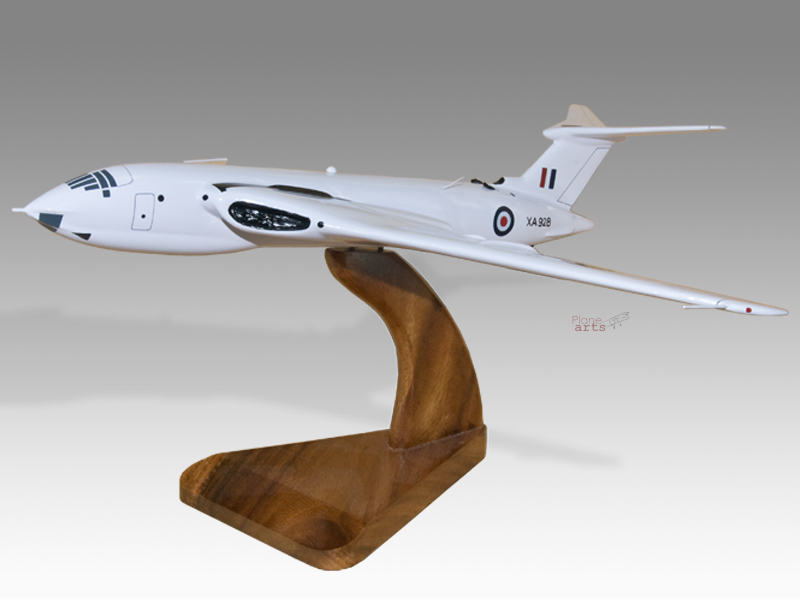
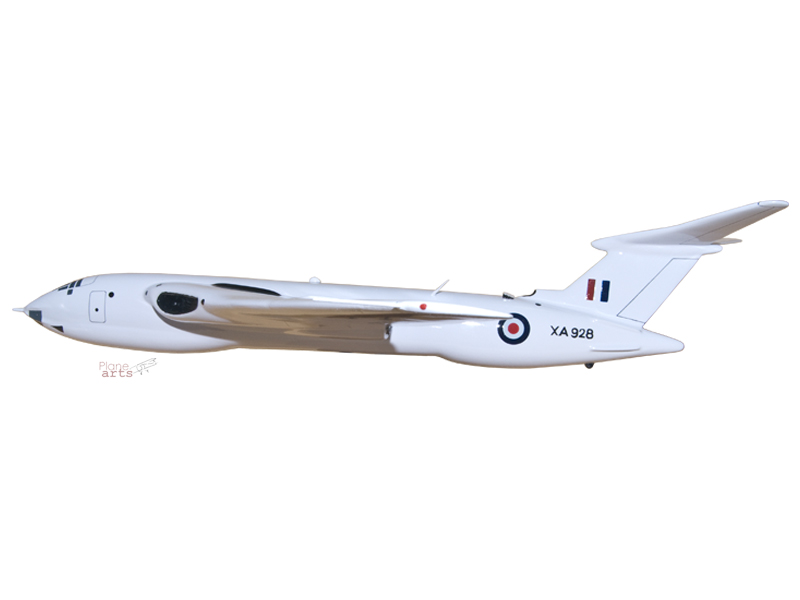
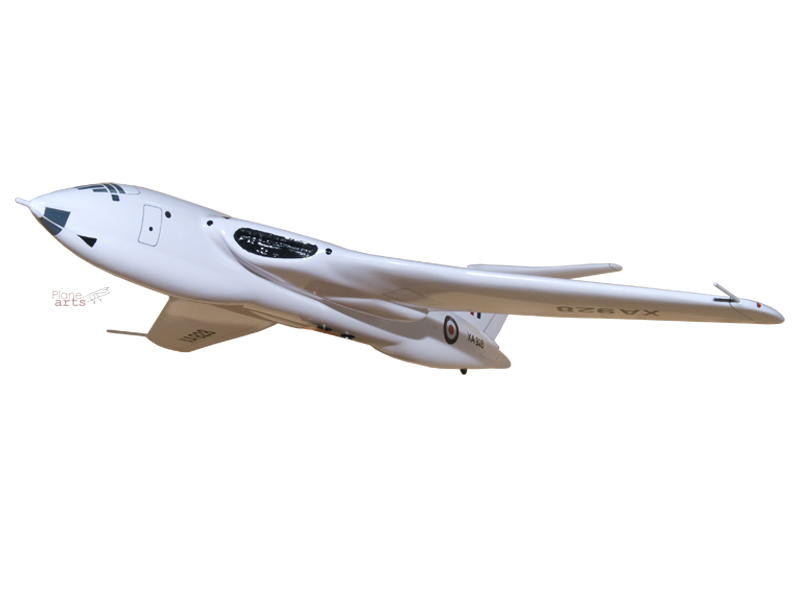
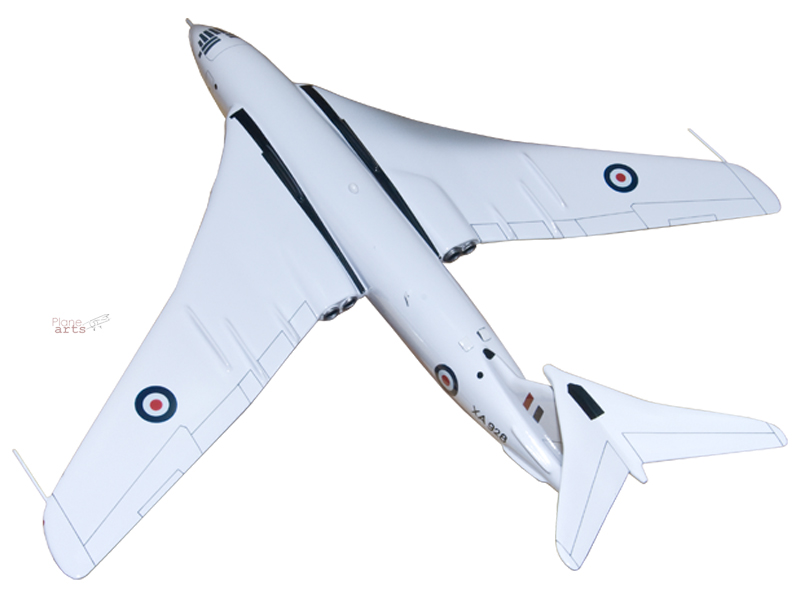
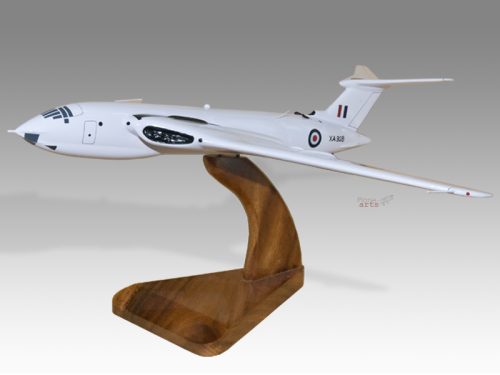

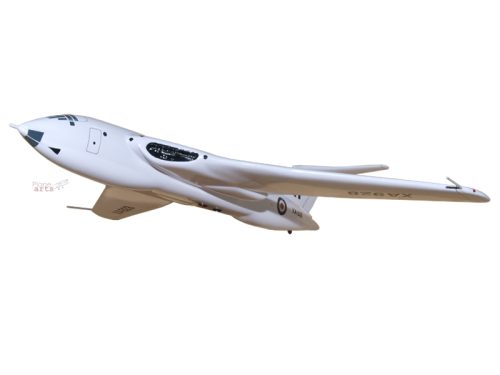
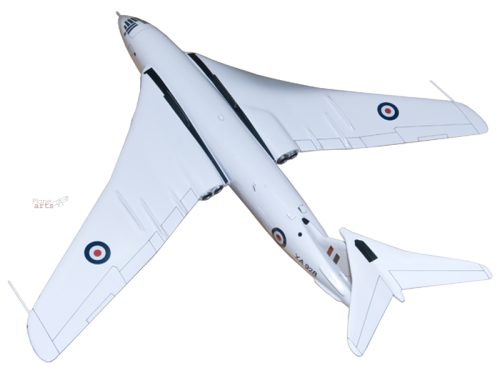


Reviews
There are no reviews yet.